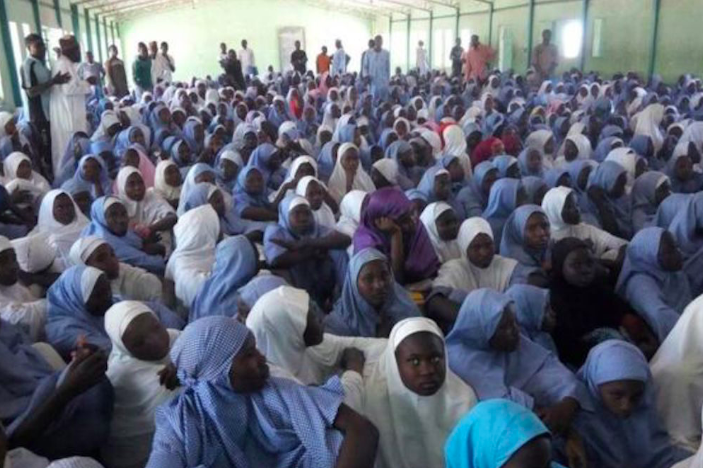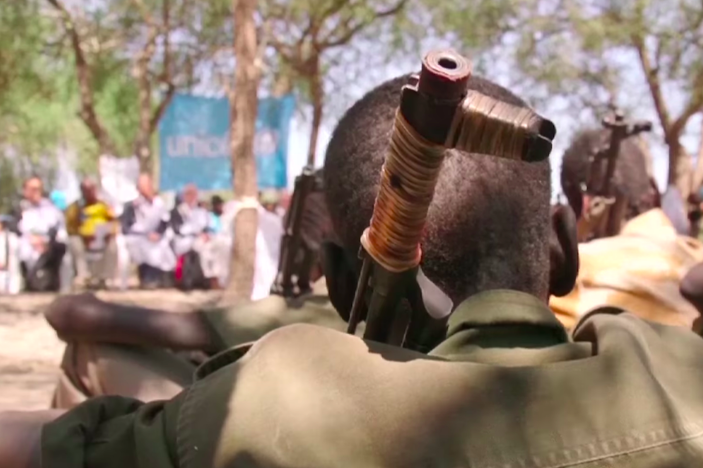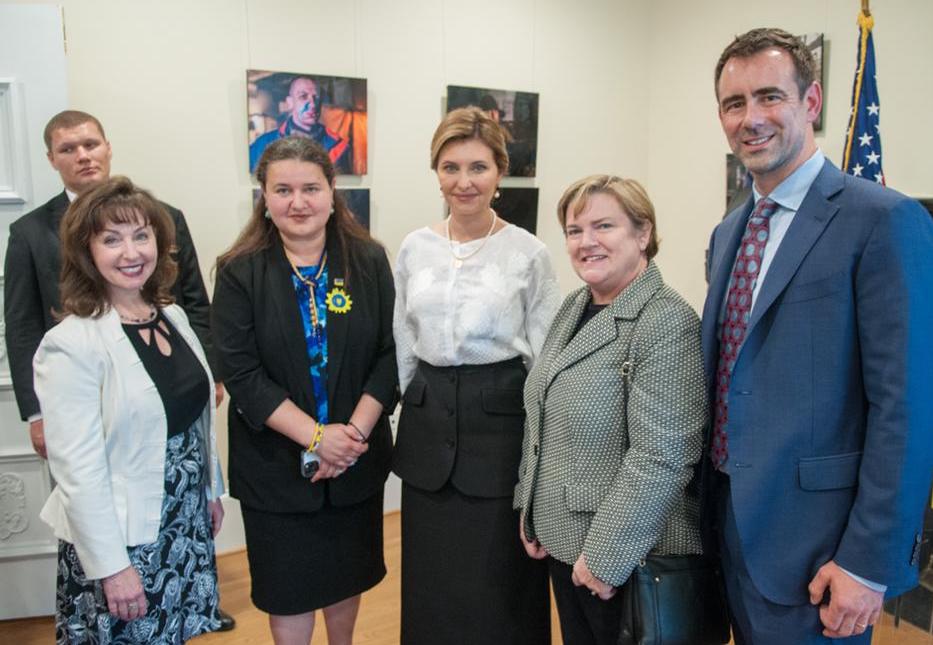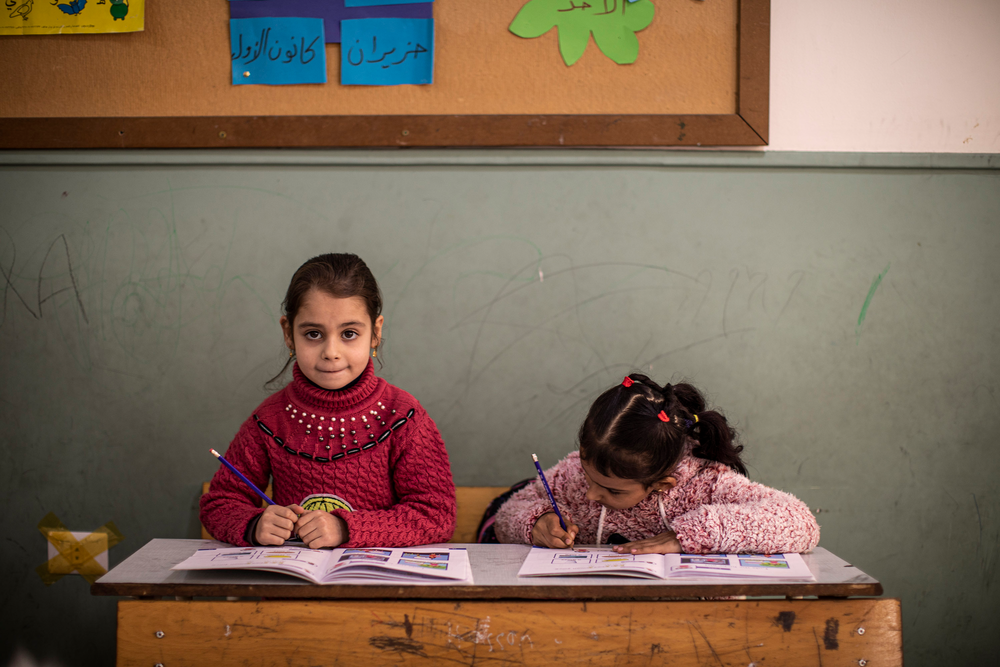
Education under attack and battered by natural disasters in 2018
Children in conflicts, Education in emergencies, Safe schools
We look at some of the catastrophes and outrages that caused millions of children to have their education disrupted this year.
One in four of the world’s school-age children – over 500 million – live in countries affected by humanitarian crises such as conflicts, natural disasters and disease outbreaks.
About 75 million children are either already missing out on their education, receiving poor quality schooling or at risk of dropping out of school altogether. Without safe places to learn, they are at risk of child labour, child marriage, exploitation and recruitment into armed groups.
There were more than 12,700 attacks on schools between 2013 and 2017 – harming over 21,000 students and teachers in at least 70 countries.
Theirworld’s report #SafeSchools: The Hidden Crisis – published earlier this month – looked at the vast scale of the challenge of getting every child into a safe school. Among the major obstacles are conflicts and disasters.

Here we look at a turbulent year for children across the world in 2018 and how wars and natural events are keeping millions out of school.
Seven years of conflict in Syria
It started with an anti-government “Day of Rage” on March 15, 2011 – and this year saw the conflict in Syria entering its eighth year.
The seven long and bloody years of war have left a country in ruins, thousands dead or maimed and the future of millions of children in doubt.
More than eight million children have been directly affected by the conflict – six million of them inside Syria and another 2.6 million who are registered refugees in other countries.
More than 1.5 million Syrian people are now living with permanent, war-related impairments – including 86,000 whose injuries have led to amputations. Tens of thousands of them are children.
We reported in April that almost 690,000 Syrian refugee children were still out of school – more than two years after world leaders promised they would all get an education.
Another two million school-age children inside Syria – 36% of the total there – are not getting an education.
Schools continued to be targeted in 2018. In February, three days of airstrikes, rocket attacks and artillery bombardment by Syrian government forces left more than 250 civilians dead – including at least 50 children – in the besieged region outside the capital Damascus. Another 1200 were injured.
In March, 15 children were killed when an air strike in Syria’s Eastern Ghouta hit a school basement they were using as a bomb shelter.
Schoolgirls kidnapped in Nigeria

We reported in February that 110 girls went missing from the Government Girls Science and Technical College in Dapchi, Yobe State. They had been kidnapped in the biggest mass abduction in Nigeria since the Chibok capture in 2014 which prompted international outrage and the global campaign #bringbackourgirls.
In March, most of the girls were released, with officials saying that 104 girls were reunited with their families after being brought back to the town.
The girls – warned by Boko Haram not to return to school – were escorted back to Dapchi by Nigerian soldiers.
The Islamist group has killed at least 20,000 people, uprooted more than 2.7 million and sparked one of the largest humanitarian crises in the world, according to aid agencies. Schooling has been greatly impacted.
Education Under Attack report
More than 21,000 students and teachers were harmed in attacks on schools and universities around the world over a five-year period, a shocking report in May revealed. They were targeted in bombings, air strikes, abductions, intimidation, sexual violence and recruitment into armed groups.
More than 40 countries suffered at least five attacks on education between 2013 and 2018 – despite such incidents being a violation of international laws.
The 300-page report Education Under Attack 2018 was unveiled by the Global Coalition to Protect Education from Attack in New York.
UNICEF Deputy Executive Director Shahida Azfar said: “Places of learning have become places of fear.”
The report painted a terrifying picture of life for many students and teachers in conflict zones. It identified more than 12,700 attacks during the five-year period.
The 41 countries that suffered five or more attacks was an increase on the 30 identified between 2009 and 2013.
Child soldiers in South Sudan

It emerged in February that hundreds of child soldiers had been freed – although around 19,000 were still with militias. Over 300 children – including 87 girls – were released by armed groups.
The children were released by the South Sudan National Liberation Movement and the Sudan People’s Liberation Army-In Opposition at a ceremony in Yambio, the capital of Western Equatoria State.
It was the first time child soldiers and other recruits had been freed in over a year.
The children released were due to get counselling and psychosocial support after being reunited with their families, or placed in care centres until relatives could be traced.
UNICEF and partners also planned to get them back into schools quickly to resume their education.
UN Children and Armed Conflict report
Unspeakable violence against children was revealed in a report by the United Nations which said more than 10,000 were killed or maimed in 2017.
Hundreds of new attacks on schools by armed factions around the world showed a “blatant disregard” by armed groups for both international law and children’s lives.
Disturbing new trends identified included the increasing use of children as suicide bombers and large-scale abductions of children.
Crises unfolding in Central African Republic, the Democratic Republic of the Congo, Myanmar, South Sudan, Syria and Yemen, meant rising violence against school children.
In DRC, fighting in Kasai led to an eightfold increase of attacks – 515 in total – on schools and hospitals.
The report was by Virginia Gamba, UN Secretary-General on Children and Armed Conflict (CAAC), who said: “When your own house or your school can be attacked without qualms, when traditional safe havens become targets, how can boys and girls escape the brutality of war?”
Theirworld and others have been campaigning for schools to be safe places for children to learn and be with their peers.
More than 70 countries have signed up to the Safe Schools Declaration – a commitment to protect education and stop military use of schools.
Earthquake in Papua New Guinea
In March, an earthquake devastated Papua New Guinea, damaging schools and disrupting the education of tens of thousands of children.
All schools in the Southern Highlands region and some in Hela region were closed indefinitely and some were destroyed completely. Many roads used by students to get to school were unsafe.
The 7.5-magnitude earthquake struck the Pacific island nation of seven million people at about 4am on February 26 and was followed by at least 70 aftershocks.
Landslides also caused major damage. At least 75 people were killed – including four schoolchildren from South Highlands. Three of them were students at Kumin Primary School.
Safe Schools Declaration
Every child in the world has the right to an education without fear of violence or attack.
But increasing numbers of children are faced with their schools being occupied – or even bombed – by military forces around the world.
Children should not pay the cost of conflict and that’s why 82 countries have now signed up to the Safe Schools Declaration – a commitment to protect education and stop military use of schools. Bolivia became the latest to sign last month.
The world’s most powerful countries – the permanent members of the United Nations Security Council – need to join them.
Two already have – France, and now the United Kingdom – and we’re calling on China, Russia and the United States to follow their lead.
Three years of war in Yemen
Three years of fighting have wrecked the education of hundreds of thousands of children.
Almost 500,000 have dropped out of school since 2015 – taking the total number out of education to over two million, according to UNICEF.
An assessment by the United Nations children’s agency titled If Not In School also revealed that:
- Almost three-quarters of public school teachers have not been paid their salaries in over a year, putting the education of an additional 4.5 million children at grave risk.
-
More than 2500 schools are out of use, with two thirds damaged by attacks, 27% closed and 7% used for military purposes or as shelters for displaced people.
-
At least 2419 children have been recruited in the fighting since March 2015
Alleged war crimes this year included more than 40 children killed on a school bus in August. They were students who on their way to summer camps, according to reports, when the vehicle was attacked as it drove through a market.
“Attacks on children are absolutely unacceptable,” said UNICEF Executive Director Henrietta Fore on Twitter. “I’m horrified by the reported airstrike on innocent children, some with UNICEF backpacks. Enough is enough.”
Lake Chad crisis
It emerged in September that one of the world’s “forgotten” crises had led to more than 30,000 people killed, around 2.4 million people displaced and six million children in need of humanitarian assistance.
The impact on education in one the poorest parts of the world has been massive.
Almost 1000 schools in northeast Nigeria, Chad, Cameroon and Niger are either closed or not operating normally because of the violence and unrest.
The education of over 3.5 million children was at risk, UNICEF warned.
“Where there is insecurity, education can be both life-sustaining and life-saving,” said Manuel Fontaine, Director of Emergency Programmes at the United Nations children’s agency.
Violence in Cameroon
Three teachers were murdered and several school students injured as education came under increasing attack in the English-speaking regions of Cameroon.
At least 30 schools have been the targets of violence by separatist rebels this year.
English-speaking regions in Cameroon’s northwest and southwest are mired in an insurgency which began in 2016. Activists in the anglophone minority, comprising about a fifth of the population, stepped up a campaign for greater autonomy.
Dozens of people have been killed and tens of thousands have fled to neighbouring Nigeria following a violent crackdown on anti-government protests.
In November, kidnapped children were warned by gunmen not to return to school. Kidnappers freed almost 80 school children in the North-West region.
The secessionists have imposed curfews and closed schools as part of their protest against Biya’s French-speaking government and its perceived marginalisation of the English-speaking minority.
Indonesia earthquakes and tsunami
In August, a powerful earthquake rocked the Indonesian island of Lombok. The disaster happened on a Sunday evening, so children were not at school at the time.
But many schools on the popular tourist island were destroyed or extensively damaged.
It was followed by another earthquake and tsunami in the Central Suwalesi region in September, which displaced over 210,000 people and damaged at least 1200 schools.
Natural disasters can mean children miss out on vital education and are deprived of a safe place to be in very traumatic situations.
Save the Children and its partner in Indonesia, Yayasan Sayangi Tunas Cilik (YSTC), warned about the psychological impact of Lombok’s earthquake on children.
“There are thousands of people sleeping outside, with as many as 80,000 people either in informal shelters or simply in the open air as they are too afraid to stay indoors,” said Silverius Tasman of YSTC.
“For children, our number one concern is their psychosocial wellbeing. Our team will provide psychological first aid to children, as well as train teachers to build psychosocial support activities into their curriculum.
Education under attack in Pakistan
In August a suicide bomber struck at an education centre in Afghanistan, killing at least 48 people.
One witness said as many as 100 students were inside the Mawoud centre in the capital Kabul, which specialises in preparing teenagers for university entrance exams.
The bombing was the latest in a series of attacks on education in Afghanistan. Both the Taliban and Islamic State have been behind attacks this year but the Taliban quickly denied they were involved in the bombing.
In July at least 11 people were killed and 10 injured after gunmen stormed an education department compound in Jalalabad city as teachers were delivering exam results.
In June, Jalalabad’s education department was also attacked by gunmen and at least 10 people were wounded.
In the same month, more than 80 girls’ schools were closed and exams cancelled after Islamic State militants warned parents to keep their children at home.
Islamic State was blamed for a horrific attack at a boys’ school in Nangarhar, in which three employees were beheaded.
Tycoon in the Philippines
In September, more than one million children’s schooling was affected by a super typhoon.
Save the Children said 4300 schools – with over one million students – were closed because they were damaged or being used as shelters.
According to the charity, the Philippines education department reported at least 170 schools suffered flooding and almost 2000 classrooms were destroyed or damaged.
Typhoon Mangkhut had wind gusts of almost 190 miles per hour and left a path of destruction in the Philippines, Hong Kong, Macau and mainland China.
In the Philippines, it tore trees out of the ground and caused dozens of landslides.
“We’re really concerned about the long-term impact of the typhoon on children, particularly those who aren’t able to go back to school,” said Save the Children’s Jerome Balinton from Tuguegarao City in northern Luzon.
‘Hundreds of classrooms have been totally destroyed. Some had roofs ripped from their foundations while others were crushed by falling trees.”
More news

Theirworld initiative helps to deliver $30m of computers to Ukrainian children
